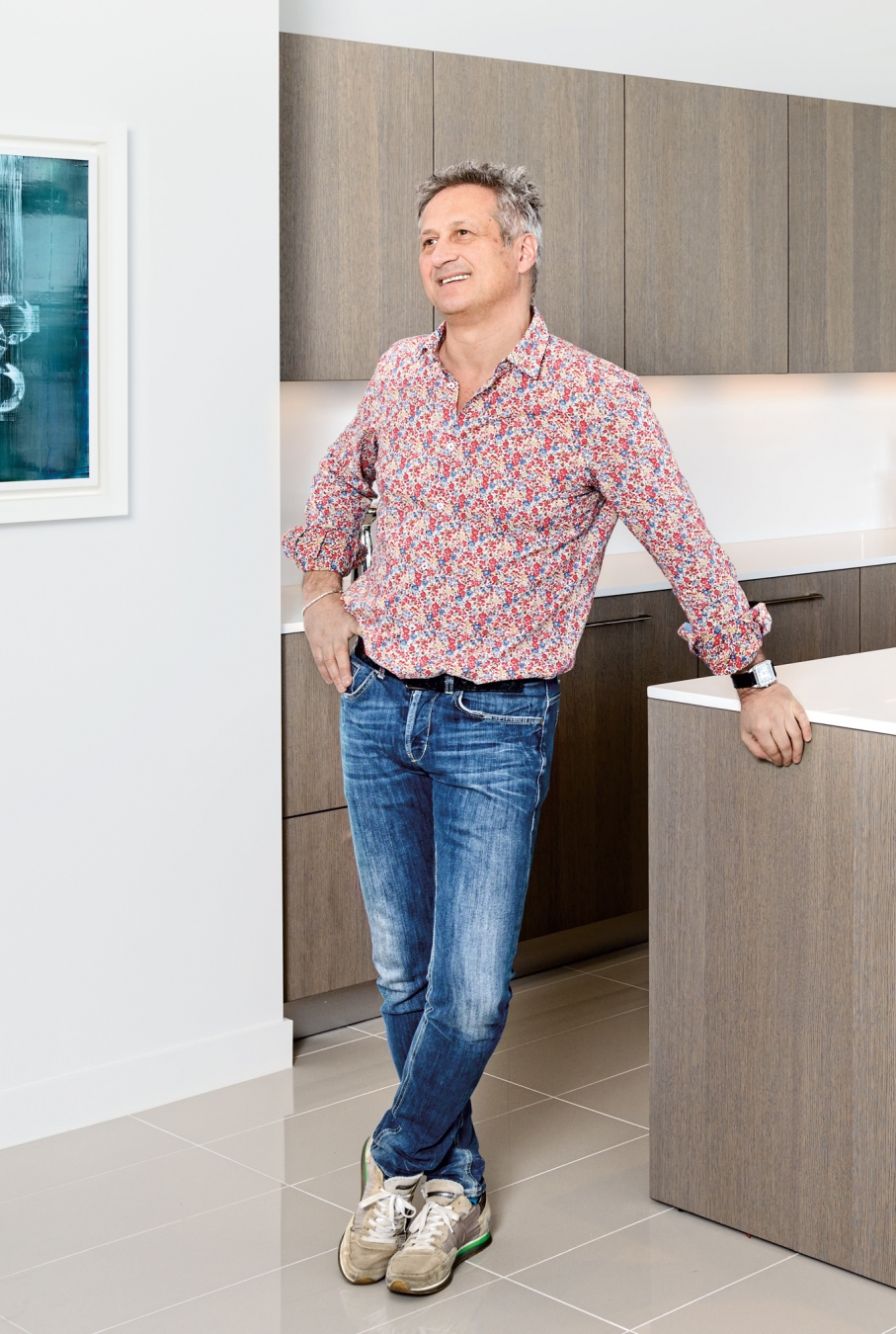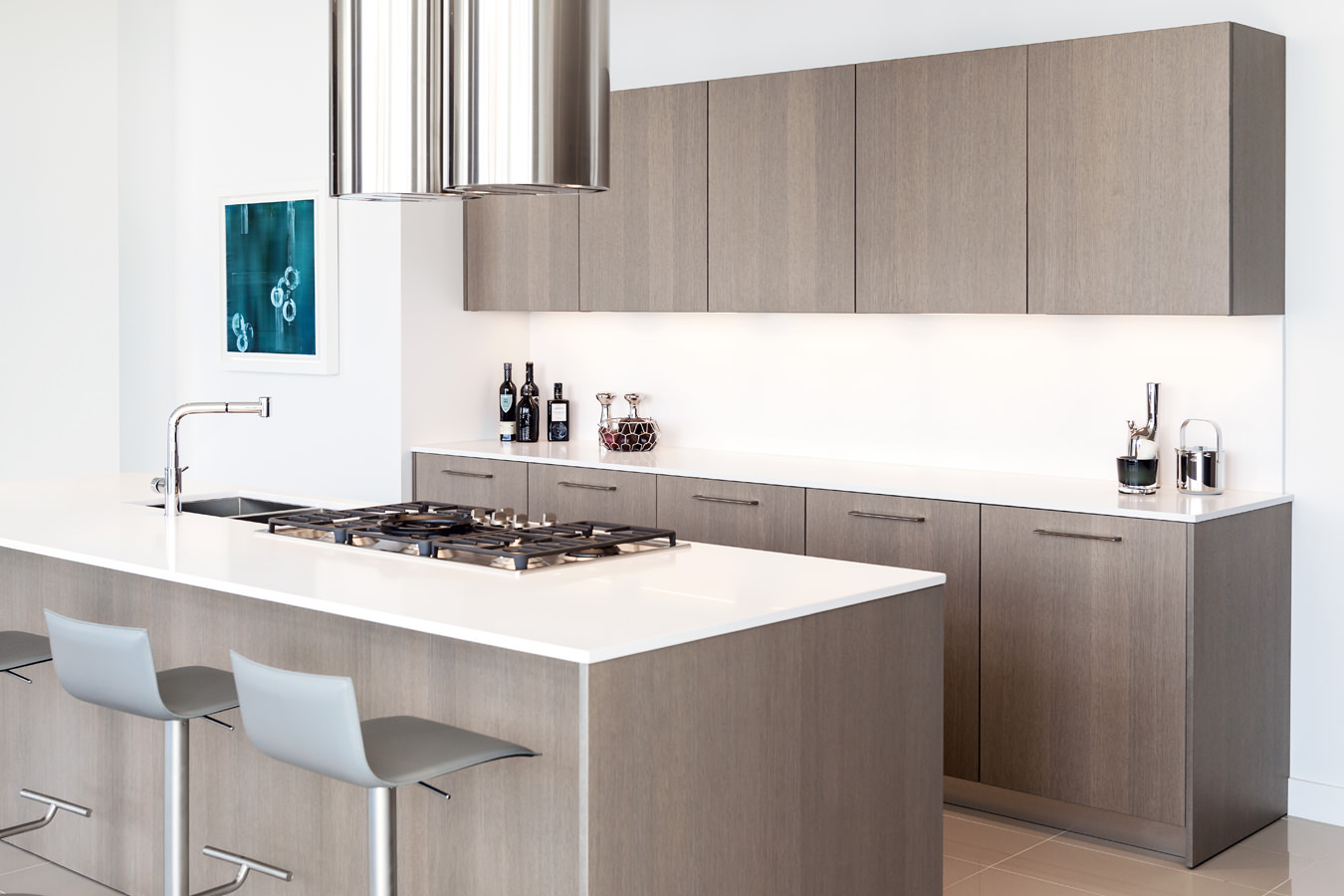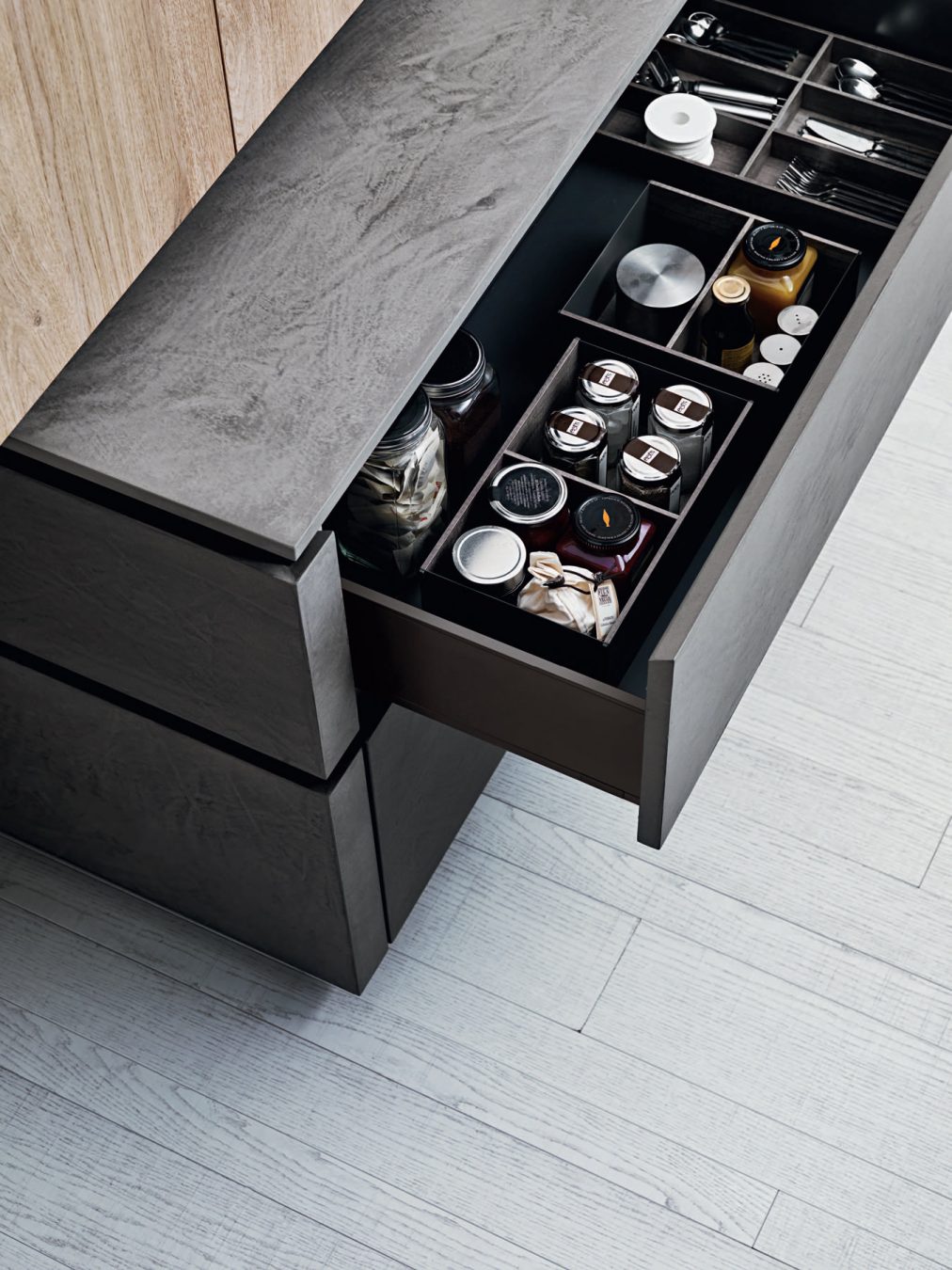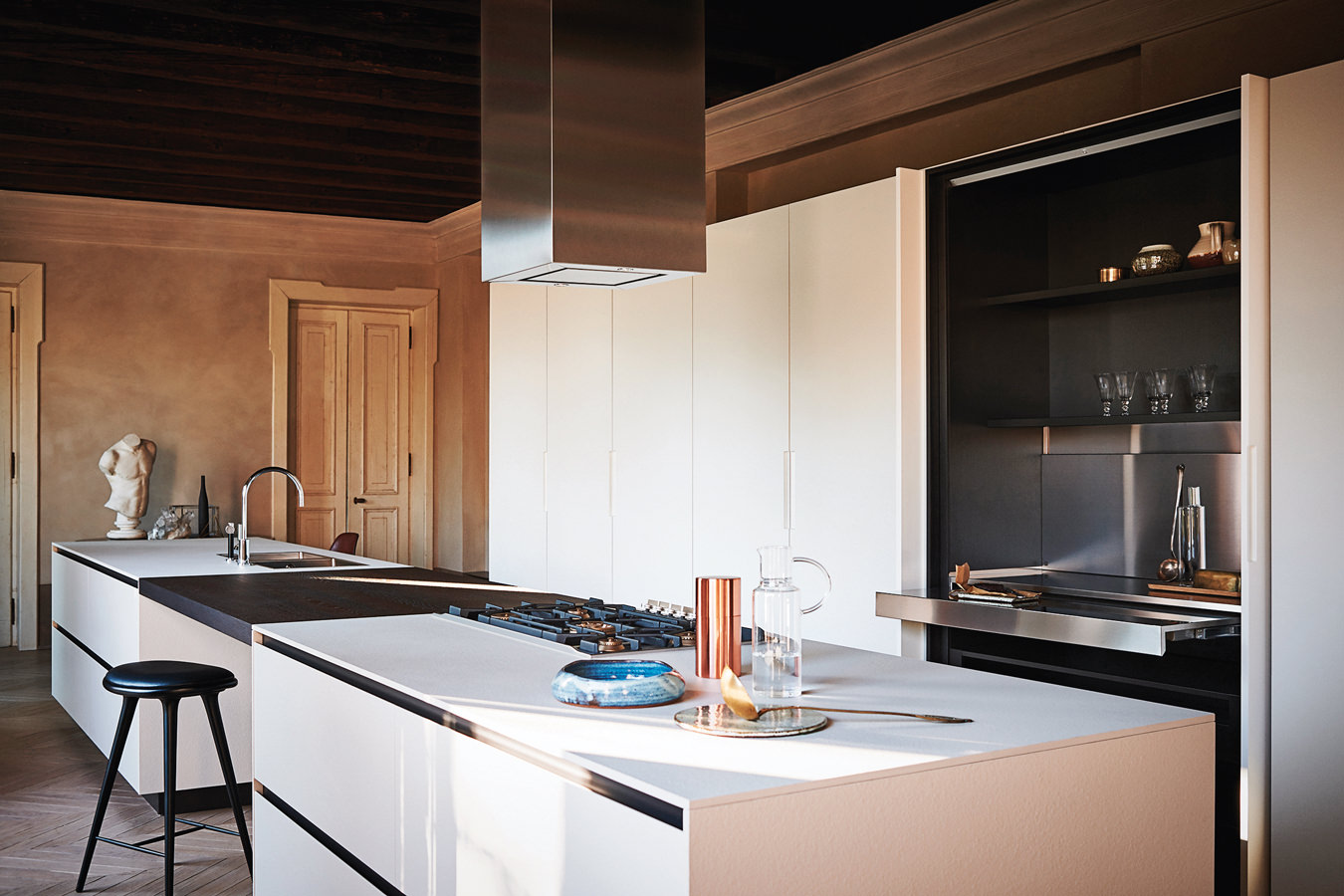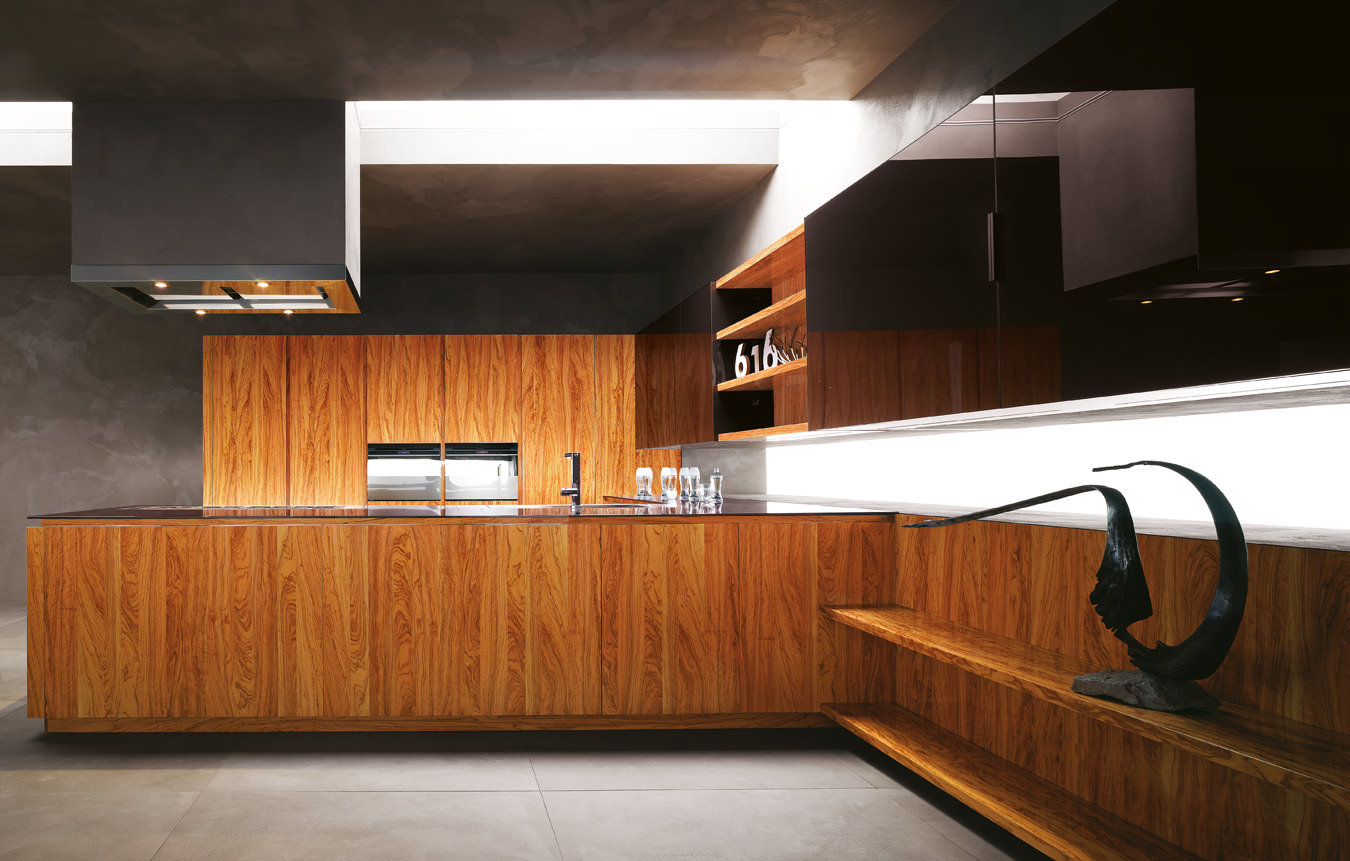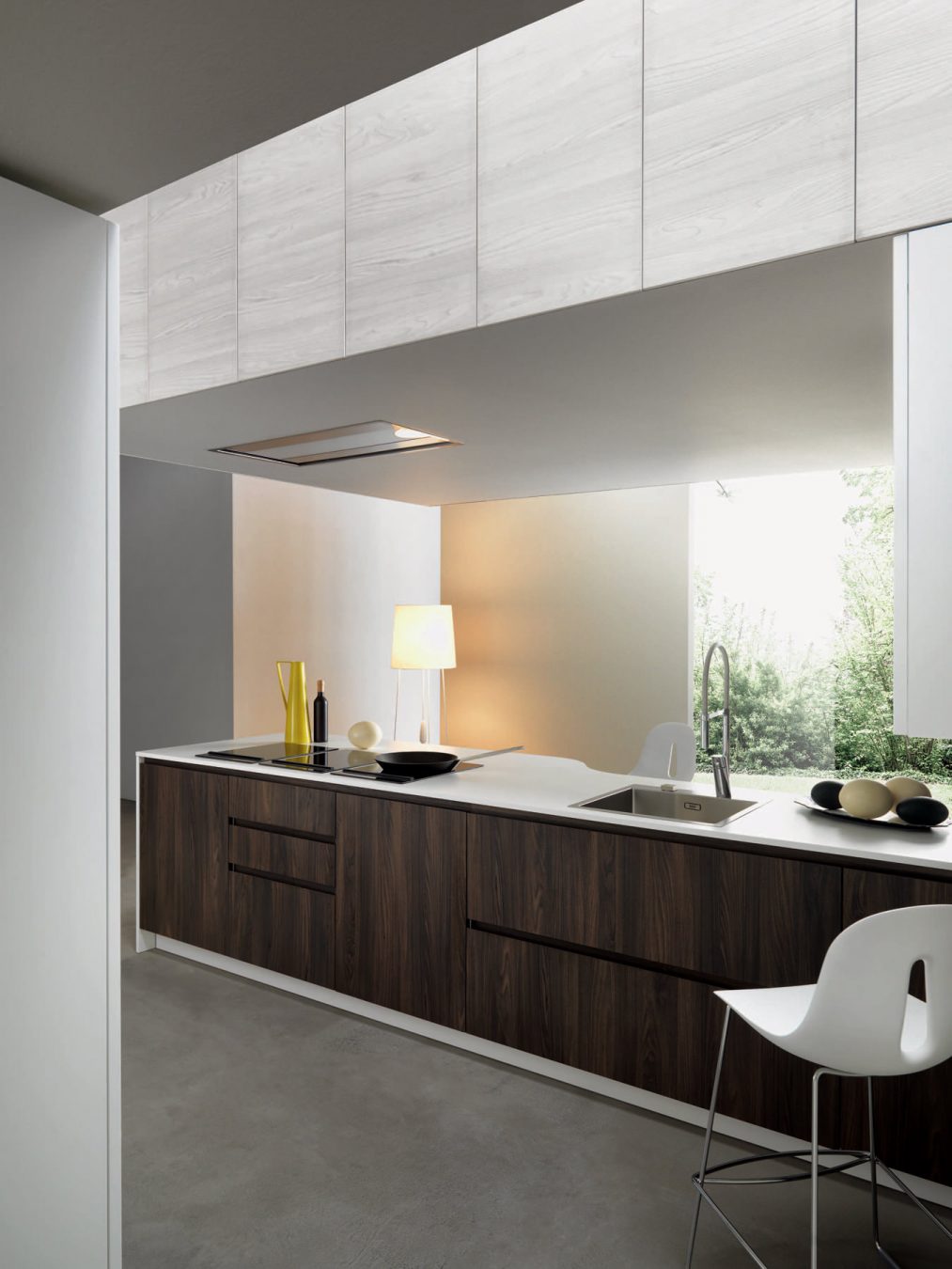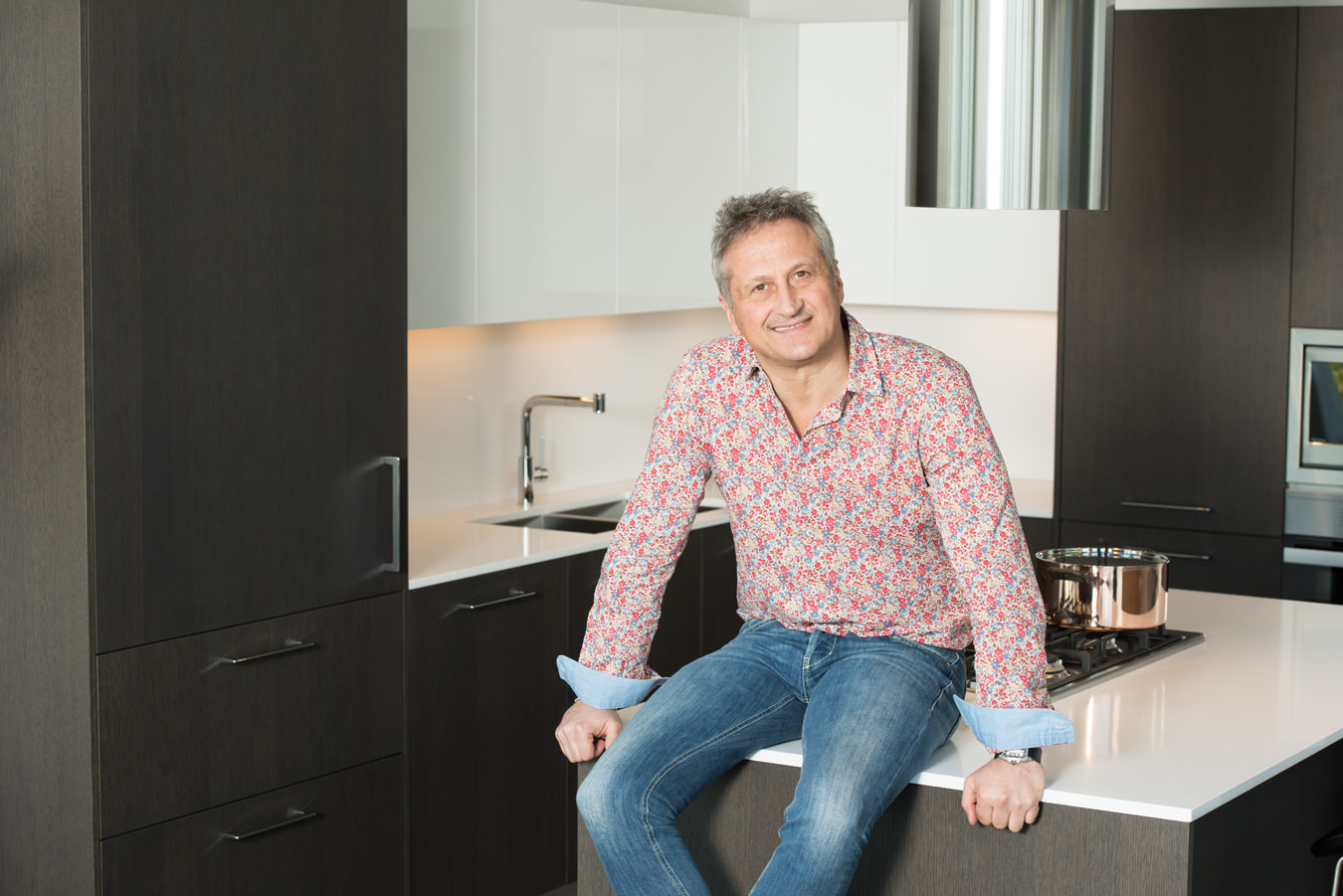Sante Vittorio Cester had been working hard, as an artisanal kitchen cabinet maker, when he decided to do something about what he saw as rapid changes in style in furniture of all kinds. It was 1968, and he transformed his workshop into what became Cesar, a pioneer in modular, versatile kitchens. Some of this was done with the rapidly maturing North American market in mind. Design, craftsmanship, and blending with contemporary household appliances became Cesar’s claim to fame, something they have continued to develop in the decades since.
Furniture in general, but most particularly kitchens, began to be fashionable in a more mainstream way, and Cesar made it possible for customers to actually personalize their kitchens. By 1995, the elder Cester had turned the company over to the next generation. Dante Cester and his sister Gina have ever since concentrated on expanding Cesar’s market reach, first into France, Greece, and Spain, and gradually all of Europe, while maintaining a presence in North America as well.
Cester sits comfortably at a table in a presentation centre that features several of his kitchens, at the 2 River Green in Richmond. “This particular kitchen is a good example of what we try to do,” he says, pointing at the cabinetry and then the appliances. “In the early days, appliances were all freestanding, but we started doing built-in units, with Electrolux at that time, and the look of the kitchen radically changed.” For the 2 River Green project, even though there are many dozens of units, Cester emphatically states that “each one is unique. It is all custom production, not industrialized. That is very important to us. Ergonomics, use of space, modality, how the appliances flow into the overall flow, these are all factors, and every unit has its own treatment.”
“We strive to be innovators, and to give our customers the chance to create their own ideal kitchen.”
He is attendant to every detail, moving his hands over countertop spaces, noting how counter heights have changed over the years as kitchens became more and more central to the design of a home, and particularly how space was allocated. Long gone are the days when kitchens were small square boxes with casual eating spaces squeezed into corners. Now, kitchens increasingly give onto living spaces, where both casual and more formal dining can take place, and where entertaining is made easy.
Cesar designs kitchen systems, which can then be adaptable to a wide variety of formulations. “Our customer realizes their dream, using our systems,” Cester notes. “We facilitate their dreams, basically.” What this means, in a literal sense, is that components of a Cesar kitchen can act almost like pieces of a puzzle. Where the refrigerator is in relation to the stovetop or the dishwasher, how much counter space there is, how many cubic metres of cabinet space, is all up for exploration and discussion.
What does not change is the signature Cesar stamp of the highest quality products. Its genetic code is rigorously artisanal, no matter how great their global reach. Research and technology play vital roles in the company’s development of new product lines, new interpretations of what a kitchen space can be. And while Cesar’s designers do take into account the differences among various international communities, Cester emphasizes that “we always maintain brand integrity, act as design leaders, not simply as producers of kitchens. We adapt, of course, with emerging technologies, and change is always necessary. We strive to be innovators, and to give our customers the chance to create their own ideal kitchen.” Take the Maxima 2.2 system, which was designed by G.V. Plazzogna and has over 80 finishes, nine materials, and five opening methods, offering an adaptable, customized, minimalist space. The design system was shown during Fuorisalone 2015, part of Milan Design Week, at the Cesar flagship store, which itself was newly and beautifully transformed under the art direction of García Cumini Associati.
These days, the company has also successfully built a contract division, which provides continuous, seamless market support everywhere in the world. “Maintaining brand integrity has a lot to do with the various local partners in each project,” says Cester. Harvey Reehal, principal at Inform Projects, worked directly with Cester on the 2 River Green project and by way of agreement simply states, “Cesar is the soul of Italian design at the highest level.” Thus it is that partners both support the Cesar brand, while Cesar affirms the quality of an overall project as well.
Cester has finished his afternoon espresso, and is apparently a bit restless, even though jet lag is in full effect. He moves around the kitchen, nodding at the hardware that the various drawers glide soundlessly, effortlessly on, noting how discreet the refrigerator is, musing out loud about how they first thought of covering a fridge to make it blend seamlessly into the cabinetry. “It was not really hiding the fridge, but about creating coherence and flow in the room,” he says. “That’s why we like to make the fridge and dishwasher blend into the cabinetry.” He pauses, then notes, almost to himself, “To stay the same is easy. To change, that is hard. You can never take it easy. We do invest in innovation, in change. It takes more energy, but we cannot accept any other way.”
Images of the Cloe, Yara, and the Maxima 2.2 courtesy of Cesar.

